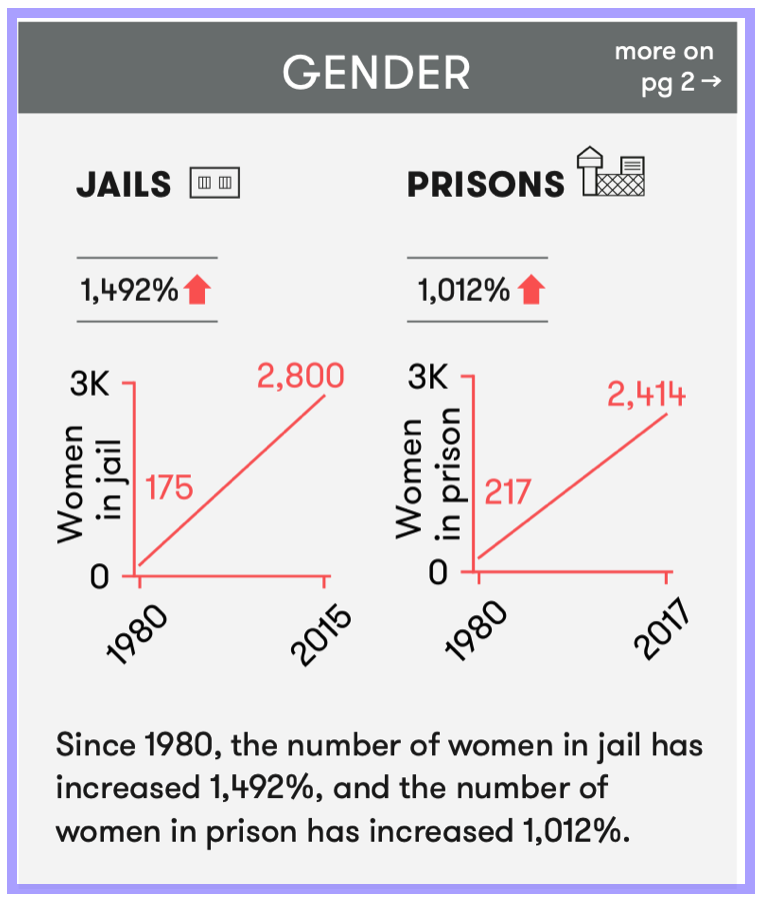 The Explosive Growth
The Explosive Growth
Of Women In Incarceration
The number of women held in Indiana jails has grown exponentially in the last several decades. Since 1980 to 2015 the numbers have increased by 1,492%, and the female prison population in Indiana through 2017 increased by 1,012%. (That was a few years ago, so the numbers are probably higher still.)
Popular opinion may disagree, but female inmates are very different than male inmates. The crimes they commit are overwhelmingly non-violent and as a group are far more vulnerable to the challenges of incarceration because they have suffered physical and sexual trauma in numbers that far exceed those in the male population. The majority are single mothers who come from low-income communities, and roughly two-thirds have been diagnosed with a mental disorder, ranging from depression, to full-blown schizophrenia.
In the last available count, Indiana's prisons held 2132 women, a mere 10% of the male population. But, women’s incarceration has grown at twice the pace of men’s in recent decades, and the female population has disproportionately been incarcerated in local jails, rather than prisons, where there is a greater availability of educational courses, and access to outside support organizations.
The underlying reasons for the explosion of incarcerated women is multi-faceted, yet the numbers do mirror the increase in single-female heads-of-households over the same decades. Some suggest that financial stress, mixed with child care pressures have had an impact on female crime levels, but there are no meaningful studies to rely on. It is clear, however, that most offenses by women are driven by unemployment and poverty, and women are more likely than men to have been abused physically, psychologically, or sexually, which often is a precursor to drug use. In fact, drug charges and property crimes, like shoplifting and check kiting are the most prevalent types of crimes committed by women, which are generally lower-level offenses, aimed at providing money for the household .
Women also have a much lower recidivism rate than men, and women who are convicted of a violent crime are not prone to repeat it, according to a study by the U.S. Department of Justice. Recidivism, of course, is highest with those who were originally incarcerated for drug offenses, but without meaningful drug abatement care in our jails, there is little hope to reduce those numbers. And, regarding the 60% of incarcerated women who have mental issues: They go in with trauma and come out with more.
Most experts agree, the female inmate population is about as different as it can be from the male inmate population. To reduce the unbridled growth of women in Indiana jails and prisons, we need a new model that provides counseling to those who need psychiatric care, and drug therapy for those who need it. For every sentence served, job training should be required as preparation for life after release, as it is the the very best protection there is to avoid continued poverty and recidivism. Finally, in a situation that doesn’t involve violence, we should not be locking up women for months because they can’t afford bail as they wait for their trial.
Last I heard, it is no crime to be poor,
Nancy








